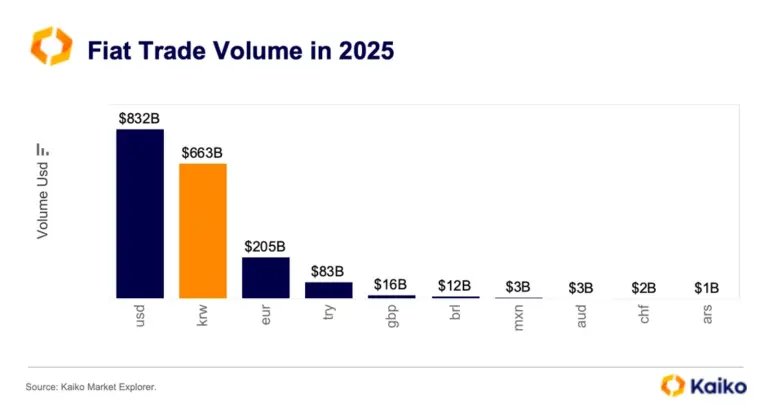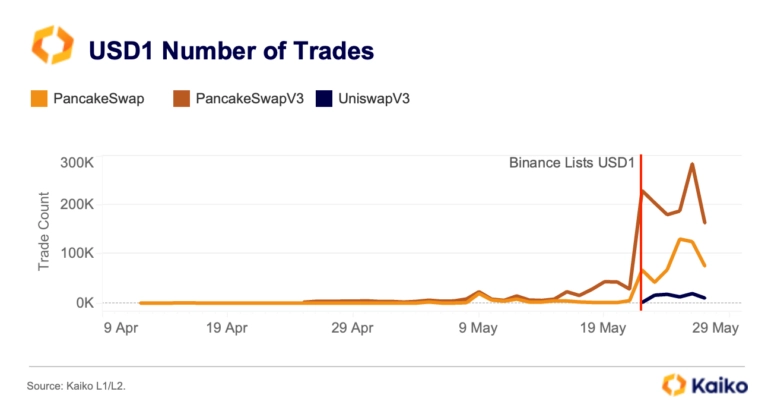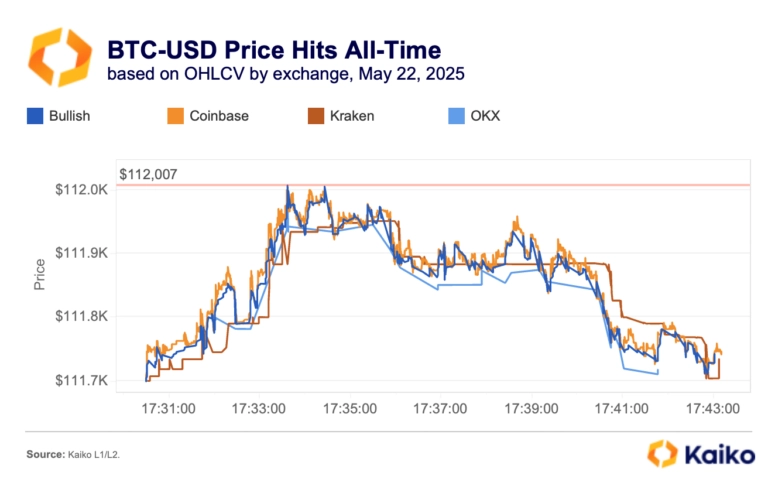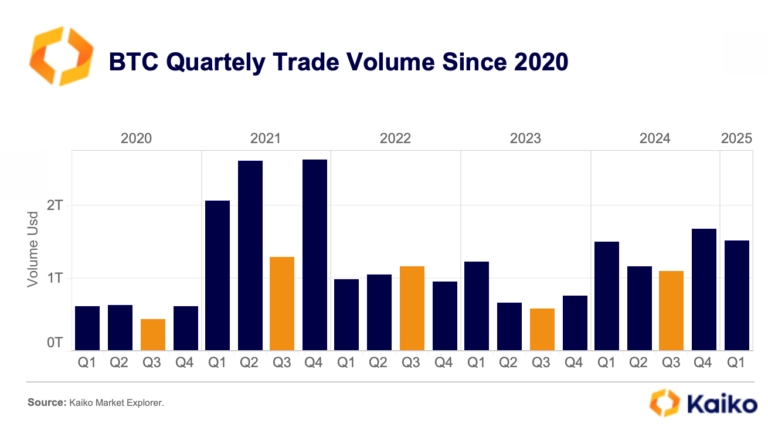Data Points
ETH dips despite strong ETFs debut.
Two months after their unexpected approval in May, nine new spot ETH ETFs began trading in the US last week. On their first day of trading, they attracted $1.1 billion in trade volume, about 20% of the first-day trade volume of BTC ETFs. Excluding Grayscale’s conversions of GBTC and ETHE, the ETH ETFs’ first-day volume was more than 80% of BTC ETFs’ volume. This suggests significant investor interest, despite typically lower market participation during the summer months.
 Despite the strong start of spot ETH ETFs, ETH prices fell by more than 6% last week as ETHE outflows weighed on market sentiment.
Despite the strong start of spot ETH ETFs, ETH prices fell by more than 6% last week as ETHE outflows weighed on market sentiment.
Three days after its conversion, ETHE saw $1.15 billion in outflows, which is approximately 12% of its AUM on launch day. This is a much faster pace than GBTC, which saw outflows amounting to only 4% of its AUM during the first three days of trading as an ETF.

Looking at ETH spot markets, the cumulative volume delta (CVD) diverged between exchanges. A negative CVD indicates net selling and vice versa. In the first hours surrounding the U.S. market open, ETH saw strong buying on Coinbase and Binance. However, selling outpaced buying on OKX, Bullish, and other smaller exchanges, suggesting some traders took profit.
BTC and ETH remain weakly correlated with US tech
In the second quarter, the correlation between BTC and ETH with the Nasdaq 100 increased slightly after hitting a multi-year low in March. However, both remain weakly correlated with US tech equities, with 90-day correlations of 0.16 (BTC) and 0.19 (ETH), much lower than their 2022 peaks of over 0.5.
Interestingly, since May, ETH has been slightly less correlated to US tech equities than Bitcoin for the first time since 2022.
In July, the US equity markets, saw a significant shift as large tech stocks lost momentum while small caps gained. This rotation was driven by rising expectations of rate cuts due to weakening US economic data and cooling inflation.
The low correlation of BTC and ETH with the Nasdaq makes them attractive portfolio diversifiers, improving the risk-return trade-off (more return for similar risk). However, the introduction of spot ETFs for both BTC and ETH will prompt institutional investors to distinguish between the two assets’ unique characteristics and risks when structuring their portfolios and building their strategic asset allocations.
Traders pile into US election contracts.
Options traders flocked to bullish bets on BTC for Deribit’s new US election contracts. The options contracts, which expire on November 8 three days after the US Presidential elections, went live on July 18.
Traders bought $41mn worth of BTC calls on Tuesday July 23. Weekend trade volumes spiked on Saturday as Republican candidate former President Donald Trump spoke during the Bitcoin 2024 conference in Nashville. Options traders bought $8mn worth of calls during the final day of the conference.

These call options give buyers the right to buy BTC at a specified price on expiration, they will be in profit (or in-the-money) if BTC is above the strike price at expiration.
The highest volume strike for BTC contracts expiring on November 8 was on the $75,000 strike, made up mostly of call options, according to Kaiko Options data. These bullish bets likely reflect traders growing conviction that the former President will win in November. The Republican candidate said he would embrace cryptocurrency and Bitcoin technology on Saturday and pledge not to sell any seized BTC the US government owned if elected.
There was considerably less action when it comes to the same contracts for ETH options on Deribit. The concentration of volume on BTC bets reflects the assets dominance during this year’s bull run.
The newly created ETH contracts experienced a spike in volume on Monday, ahead of last Tuesday’s spot ETF launch in the US. Traders bought $7mn worth of calls on ETH and $1mn worth of puts — which pay off if ETH price falls.

While volumes were much smaller than the equivalent contracts for BTC they remained very bullish. Most options volume for ETH on this expiry coalesced around strike prices between $4,500 and $6,000.
RUB and UAH volume decline since the start of the war.

Crypto trade volumes in Ukrainian Hryvnia and Russian Ruble has plummeted since the onset of the war in February 2022. BTC traded at a 6% premium on Binance’s Ukrainian Hryvnia (UAH) market as demand for cryptocurrencies soared immediately following Russia’s invasion.
That initial spike has faded and UAH volumes have fallen consistently ever since. However, RUB volumes have experience some spikes in the intervening period — despite most exchanges removing support for Russian pairs.
Yobit is the only exchange Kaiko’s coverage offering RUB pairs versus cryptocurrencies. HTX had offered support for some RUB pairs in January 2023, but it removed these pairs in June. Binance fully exited the Russian market after media reports last summer that it helped customers move funds held in sanctioned Russian banks.

The exchange sold its Russian business to CommEX in September 2023 and ended RUB peer-to-peer support on Jan 31, 2024. CommEX has since closed.
Turkish traders prefer meme tokens and stablecoins to BTC.

The Turkish crypto market has seen remarkable growth in recent years. Over half of the country’s population has now invested in crypto. The surge in activity is largely due to macroeconomic factors, such as high inflation and currency devaluation. This has significantly boosted the use of stablecoins over the past years.
In 2024, USDT-TRY is by far the largest trading pair by volume on Binance with more than $22bn.
However, Turkish traders have also turned to riskier crypto assets to hedge against currency volatility and speculate. Meme tokens have all surpassed Bitcoin in trade volume this year. For a more detailed analysis of the Turkish market, check out our lastest Deep Dive here.


![]()
![]()
![]()
![]()







 Despite the strong start of spot ETH ETFs, ETH prices fell by more than 6% last week as ETHE outflows weighed on market sentiment.
Despite the strong start of spot ETH ETFs, ETH prices fell by more than 6% last week as ETHE outflows weighed on market sentiment.








